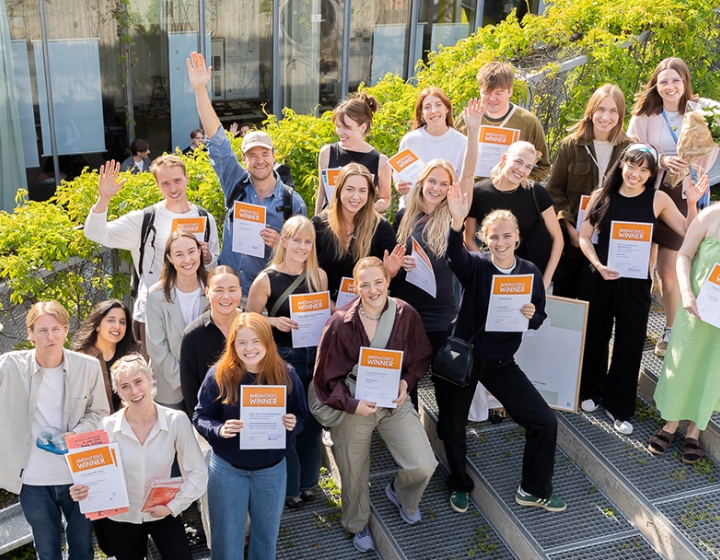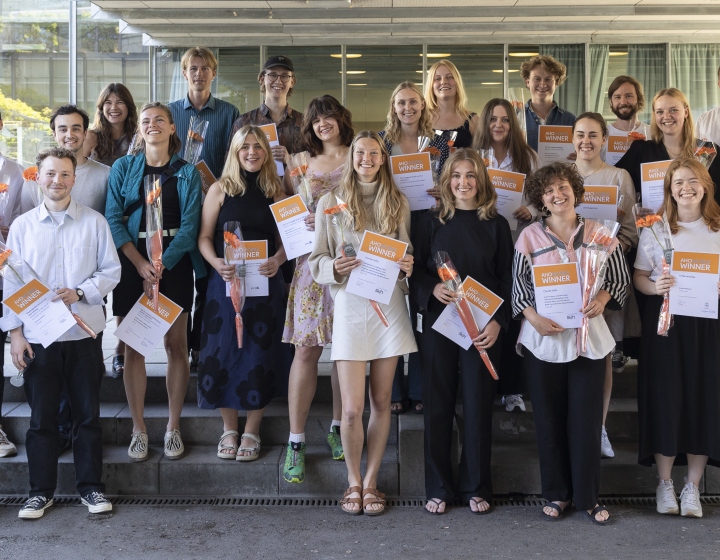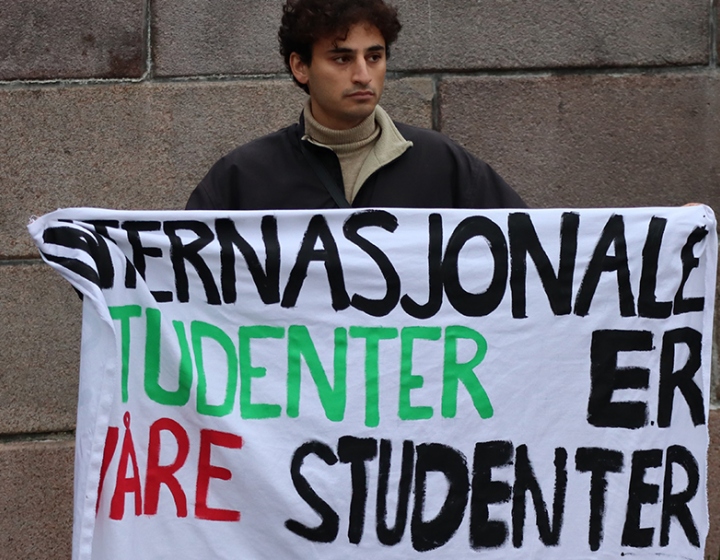Vardø Restored
23. October, 2015
This summer, Landscape Architecture students from the master programmes in both Oslo and Tromsø had the opportunity to join an exciting workshop in the far north of Norway.
The workshop was a part of an ongoing collaboration between the research group Future North, AHO and Vardø Restored, a platform for place development located at Varanger Museum in Vardø.
The workshop was the second summer workshop arranged by Future North in a process that aims at mapping cultural value and heritage in Vardø. The work will form the basis for a strategic restoration plan for the city.

Lundefugl, bird watching at Reinøya, an island close to Vardø.
The students participated in the project during their workshop by practicing cultural mapping, surveying old building structures and collecting narratives by interviewing locals. In this way, the students became familiar with some of the challenges that Vardø, and other coastal towns of Norway are facing today; decreasing population as a consequence of abandoned industry and few workplaces.
Vardø used to be a place with a strong cultural identity linked to its fishing industry. As some of the production was moved, factories and some of residential buildings were abandoned, creating challenges for the small community.

Abandoned fishing factory with humoristic twist. Graffiti artists are creating awareness about the cultural heritage and the previous fishing village identity. Cod is great.
How do places like Vardø face these challenges and plan for a sustainable future for their inhabitants and their built environment? Vardø Restored and Future North aims to include participatory and bottom up solutions for a strategic restoration plan so that the inhabitants are involved in the regeneration.
The spring 2016 Studio in Tromsø will be dedicated entirely to the development of a new city plan for Vardø. While the city plan is traditionally a tool for the handling of urban growth, the challenge here is how the city plan may be considered a tool in qualitative transformation, one that favors cultural heritage as well as landscape qualities. This course will be available for master students of both Architecture and Landscape architecture.
The course leader will be Thomas Juel Clemmensen and involved researchers from Future North will be Janike Kampevold Larsen, Andrew Morrison and Henry Mainsah.

Contemporary architecture creates awareness about the witch hunting processes around the 17th century. Steineset Memorial by Peter Zumptor and Louise Bourgeois.
Pictures by Hsiang-Hsiang Wang and Miles Hamaker
The workshop was the second summer workshop arranged by Future North in a process that aims at mapping cultural value and heritage in Vardø. The work will form the basis for a strategic restoration plan for the city.
Lundefugl, bird watching at Reinøya, an island close to Vardø.
The students participated in the project during their workshop by practicing cultural mapping, surveying old building structures and collecting narratives by interviewing locals. In this way, the students became familiar with some of the challenges that Vardø, and other coastal towns of Norway are facing today; decreasing population as a consequence of abandoned industry and few workplaces.
Vardø used to be a place with a strong cultural identity linked to its fishing industry. As some of the production was moved, factories and some of residential buildings were abandoned, creating challenges for the small community.
Abandoned fishing factory with humoristic twist. Graffiti artists are creating awareness about the cultural heritage and the previous fishing village identity. Cod is great.
How do places like Vardø face these challenges and plan for a sustainable future for their inhabitants and their built environment? Vardø Restored and Future North aims to include participatory and bottom up solutions for a strategic restoration plan so that the inhabitants are involved in the regeneration.
The spring 2016 Studio in Tromsø will be dedicated entirely to the development of a new city plan for Vardø. While the city plan is traditionally a tool for the handling of urban growth, the challenge here is how the city plan may be considered a tool in qualitative transformation, one that favors cultural heritage as well as landscape qualities. This course will be available for master students of both Architecture and Landscape architecture.
The course leader will be Thomas Juel Clemmensen and involved researchers from Future North will be Janike Kampevold Larsen, Andrew Morrison and Henry Mainsah.
Contemporary architecture creates awareness about the witch hunting processes around the 17th century. Steineset Memorial by Peter Zumptor and Louise Bourgeois.
Pictures by Hsiang-Hsiang Wang and Miles Hamaker
“I find that I am absolutely obsessed by the north of Norway.”
Miles Hamaker, master student from USA
“We found that tourists would pay thousands of kroner to watch the Northern Lights, while we watched it for free. The Northern lights were dancing outside our window.”
Hsiang-Hsiang Wang, master student from Taiwan
“The interesting part of this workshop was that I could engage with an actual challenge and practice my aspiring profession in a new and unknown context.”
Hsiang-Hsiang Wang, master student from Taiwan
Miles Hamaker, master student from USA
“We found that tourists would pay thousands of kroner to watch the Northern Lights, while we watched it for free. The Northern lights were dancing outside our window.”
Hsiang-Hsiang Wang, master student from Taiwan
“The interesting part of this workshop was that I could engage with an actual challenge and practice my aspiring profession in a new and unknown context.”
Hsiang-Hsiang Wang, master student from Taiwan



